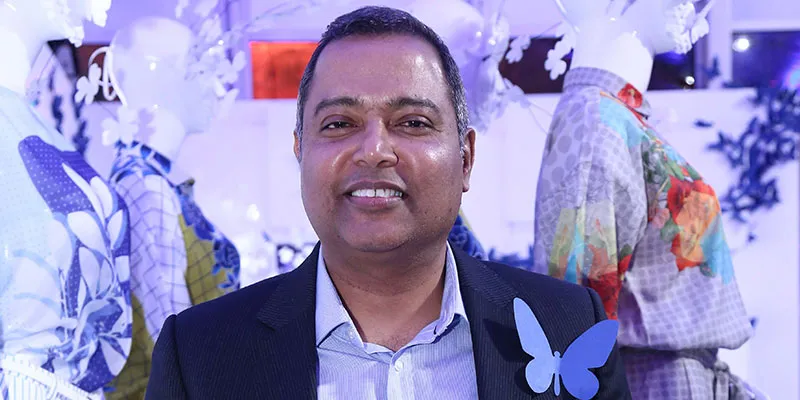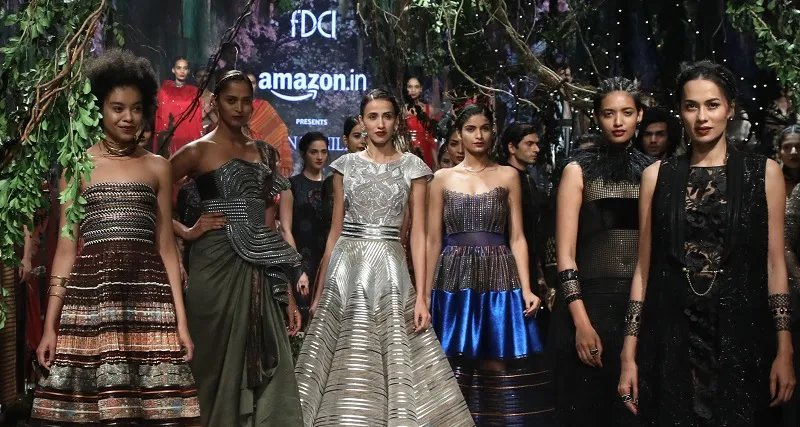How Amazon is knitting together a tale of fashion domination in India
Athira Nair

Monday June 05, 2017 , 7 min Read
Amazon is going all out to woo brands and customers alike to its fashion category, a strategy that already seems to be working well for the e-commerce site.
Amazon has one goal in India - absolute e-tail domination. To achieve that it needs to first win the fashion category. The powers that be in the global e-commerce major know this well and have been working hard to make Amazon very fashionable indeed.
Why is that, you ask? It is because of an illuminating statistic – one out of almost three new customers come to Amazon’s India site to buy fashion. No wonder, then, that Amazon considers it a magnet category. In fact, during the recently concluded ‘Great Indian Sale’ apparel was the single largest category on the platform, ahead of mobile phones, the traditional top seller. And fashion was the second largest category for new customer acquisition during the sale. That is big news in e-commerce as mobile phones continue to be the biggest category for the industry. In 2016, the share of mobile phones was at around 48 percent of gross online retail sales, while fashion accounted for around 20-22 percent, according to research and consulting firm Red Seer.

Fashion is also a high-margin, high repeat purchase rate category, unlike mobile phones, which offer low margins, and customers replace their phone only after around a year. Amazon in the US had a late start in fashion, launching the category only in 2006. “There is a big difference in the way we look at fashion in India compared to how we do it in the US where we were first selling only books and then slowly started adding other categories,” says Arun Sirdeshmukh, Head of Fashion, Amazon India.
On day one (of launch of Amazon.in), we launched watches; footwear segment soon followed, and within a few months, we had launched the entire spectrum of fashion. We have been marketing two brands to Indian consumers – Amazon and Amazon Fashion.”
This focus right from when Amazon launched in India in 2013 has shown results. According to data from Counterpoint Research, fashion was Amazon India’s fastest growing category, with 78 percent growth in 2016 over the previous year, while Flipkart’s growth in this category stood at 15 percent. However, Flipkart has had a headstart over Amazon in this category, with the homegrown e-commerce major selling fashion products on its own platform and through subsidiaries—Myntra and Jabong. Flipkart, together with Myntra and Jabong, claims to have a 75 percent share in online fashion retail. Amazon disputes that, but has declined to share absolute numbers.
So what has Amazon done to ensure rapid growth in this category?
It is raining brands
Amazon has focussed on getting entire ranges of as many brands on its site as possible. Arun, who earlier co-founded fashion site Fashionara, shares that Amazon India hosts 15,000 brands and over two million products. In 2016 Amazon Fashion inked deals with over 150 top fashion brands, including Aeropostale, Emporio Armani, Armani Exchange and Versus by Versace. This year, the company bagged exclusive partnerships with US brands GAP and Under Armour, among others. Amazon also has entered into partnerships with Indian designers including Tarun Tahiliani, Monisha Jaysingh and Manish Arora. This is in sharp contrast to what’s happening with its parent site in US.

While Amazon globally has ambitions to become an elite fashion destination, top design houses have stayed away as it is still seen as a mass retail platform. In October 2016, during an earnings conference call with investors, LVMH’s (which owns Louis Vuitton) CFO Jean-Jacques Guiony said: "We believe the business of Amazon does not fit with LVMH, full stop, and it does not fit with our brands."
This is because online retail still caters to the top end of the Indian consumer spectrum and designers want a share of this wallet. For global brands Amazon is a known platform. Arun says details like the way the site catalogues products and interacts with customer matter to a brand. He adds,
We provide space for a brand – the Brand Page – where they can tell the brand’s story. We want to romance the customer with that story. Otherwise they are just buying an item. We work with the brands, and get them directly involved with our editorial teams with content writers, photographers, stylists etc. We write on our blog about fashion and what is trending. So we weave the brand’s story into the content for the customer.”
This practice of turning the spotlight on brands has translated into exclusive launches, ensuring an edge for the platform. For instance, Speedo recently launched a line of high-end goggles, priced at Rs 5,000, for swimmers. Arun says of the top 100 brands, 50 launched their summer collections first on Amazon.
“People shop online for many reasons like price and convenience. But the evolved customers, especially in women’s fashion more than men’s, are looking for the latest styles, seasonal colours, fabrics, designs and trends. We are beginning to score on these counts. We work with the brands to ensure that there is inventory with our sellers on time. How do you prioritise that, how do you get it on the platform, how do you digitise the content – we work with them on everything,” says Arun.
Amazon claims that during the recently concluded Great Indian Sale the top 30 brands from Amazon Fashion’s branded portfolio contributed the highest to overall sales.
Prime advantage
Prime has been a not-so-secret weapon for Amazon ever since it launched the popular membership programme in India last year. Prime members get free faster deliveries, early access to certain deals and access to unlimited video streaming for a membership fee of Rs 499 per year. “Prime has contributed quite massively,” says Arun. One in three purchases for Amazon Fashion happens through Prime.
To ensure Prime members get their products within the given time period, Amazon makes sure that a large selection of products across categories, not just in fashion, is available in its warehouses. So it incentivises sellers to maintain inventory in Amazon warehouses, ensuring it has greater control over everything, from quality of product to delivery speed.
The increase in orders from Prime members – there was 100 percent growth in purchases made by paid Prime members during the latest sale compared to a similar sale event in January – is testimony to the fact that the membership has given confidence to customers to make more purchases. This is especially true in a category like fashion, which ticks both the impulse purchase box and the high touch-and-feel box.
Innovate to stay ahead
The site has also constantly experimented to increase their products' appeal to customers. For instance, in precious jewellery Amazon India shows a breakup of the price, like making charges and stone charge as Indian customers are used to this in offline stores. The prices are also linked to the gold price of the day.
Arun says the company accepts that easy returns are part of providing a good shopping experience for customers, especially in the fashion category. So instead of curbing returns, the site has made it even easier with an 'Auto Exchange' feature on the app. If a customer has placed an order for a piece of clothing and then realises that the size could be wrong, he or she can just change the size and Amazon will change the order. “That one click triggers a lot of processes in the backend like changing the product if it has already been packed or placing a pick-up request if the product has been delivered,” says Arun.
Apart from large sales events like the Great Indian Shopping Festival, Amazon Fashion also holds specific events like a Denim Fest and Kids Fashion Carnival. These initiatives have helped Amazon Fashion reach this far, but is it enough to unseat Flipkart? Arun seems to think so. He says:
Maybe three to five percent of fashion bills are cut online. There is a long way to go. The penetration of fashion business in the West is 18-20 percent. So we need to put our heads down, get the right selection, build inventory and great brand equations, give reasonable prices, and make it easy to search for a product on the website. A customer might want different things at different times; we want to be the single platform for all his/her shopping needs.”






